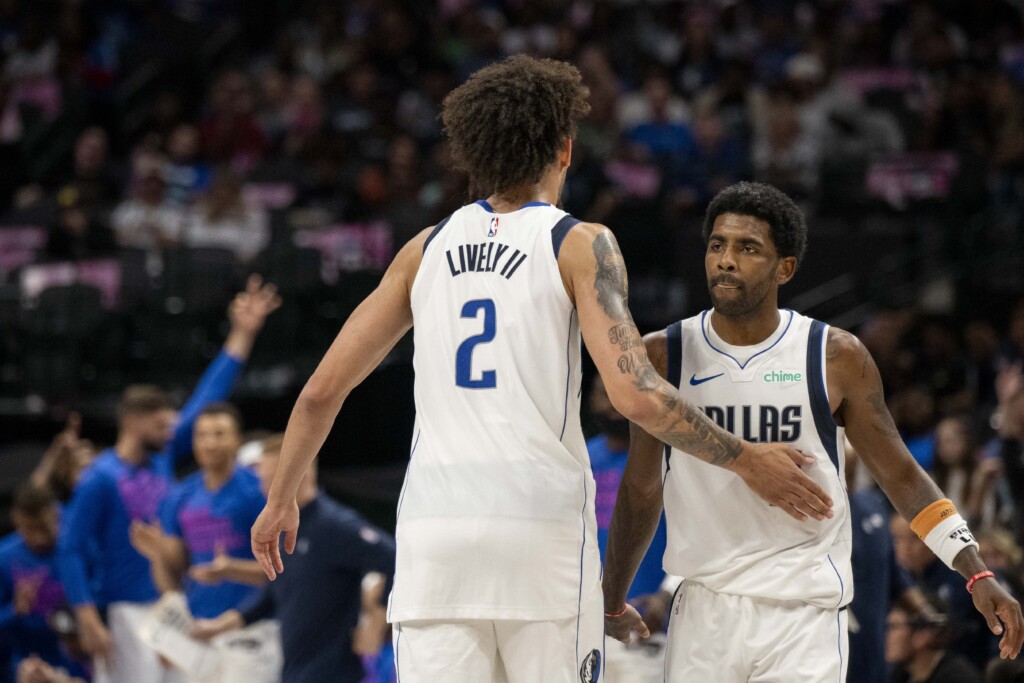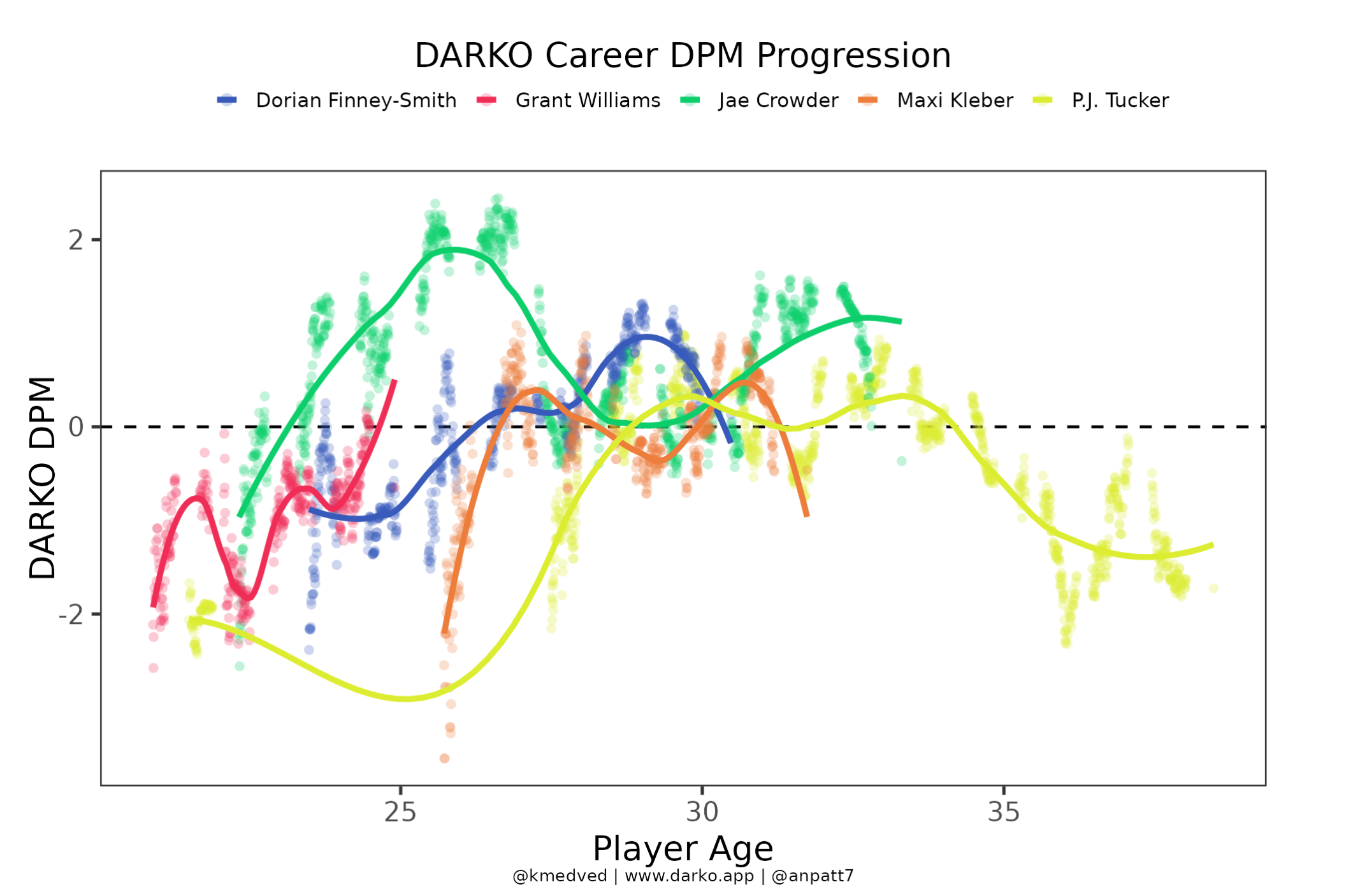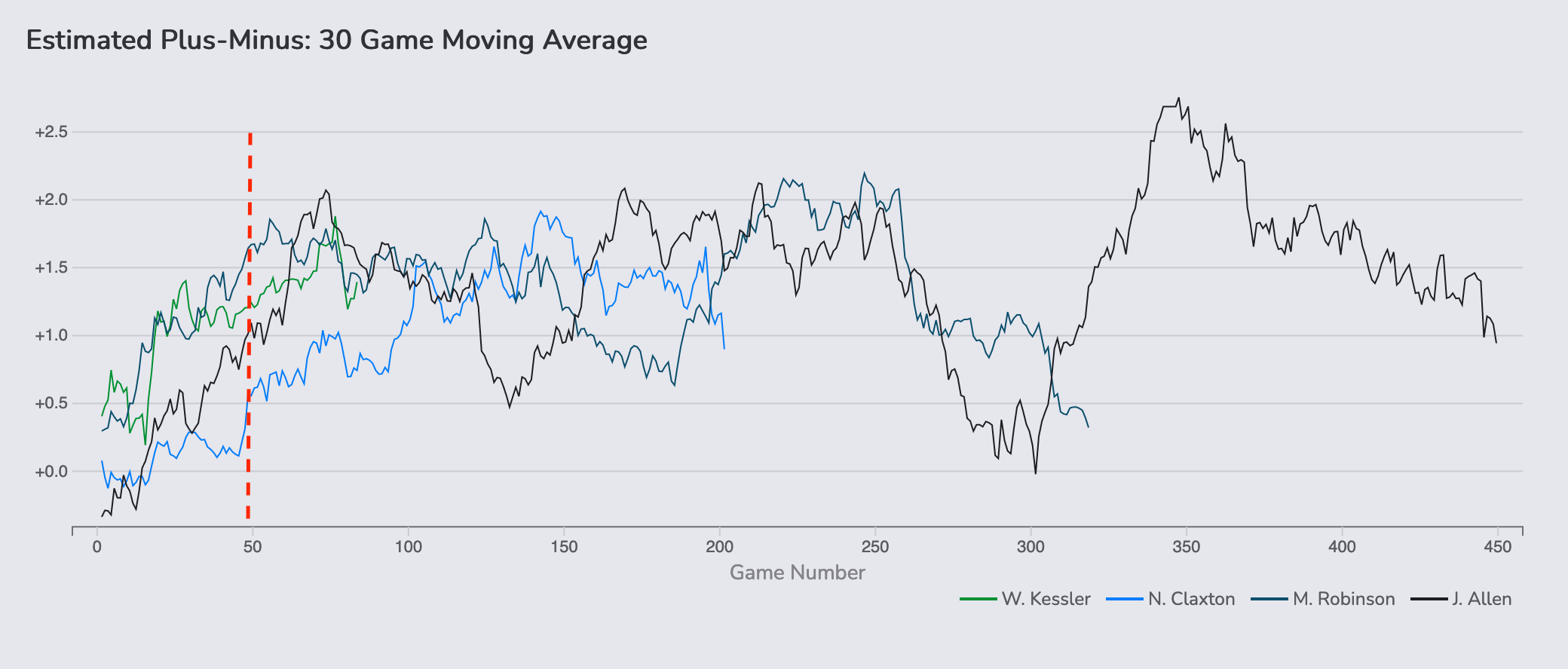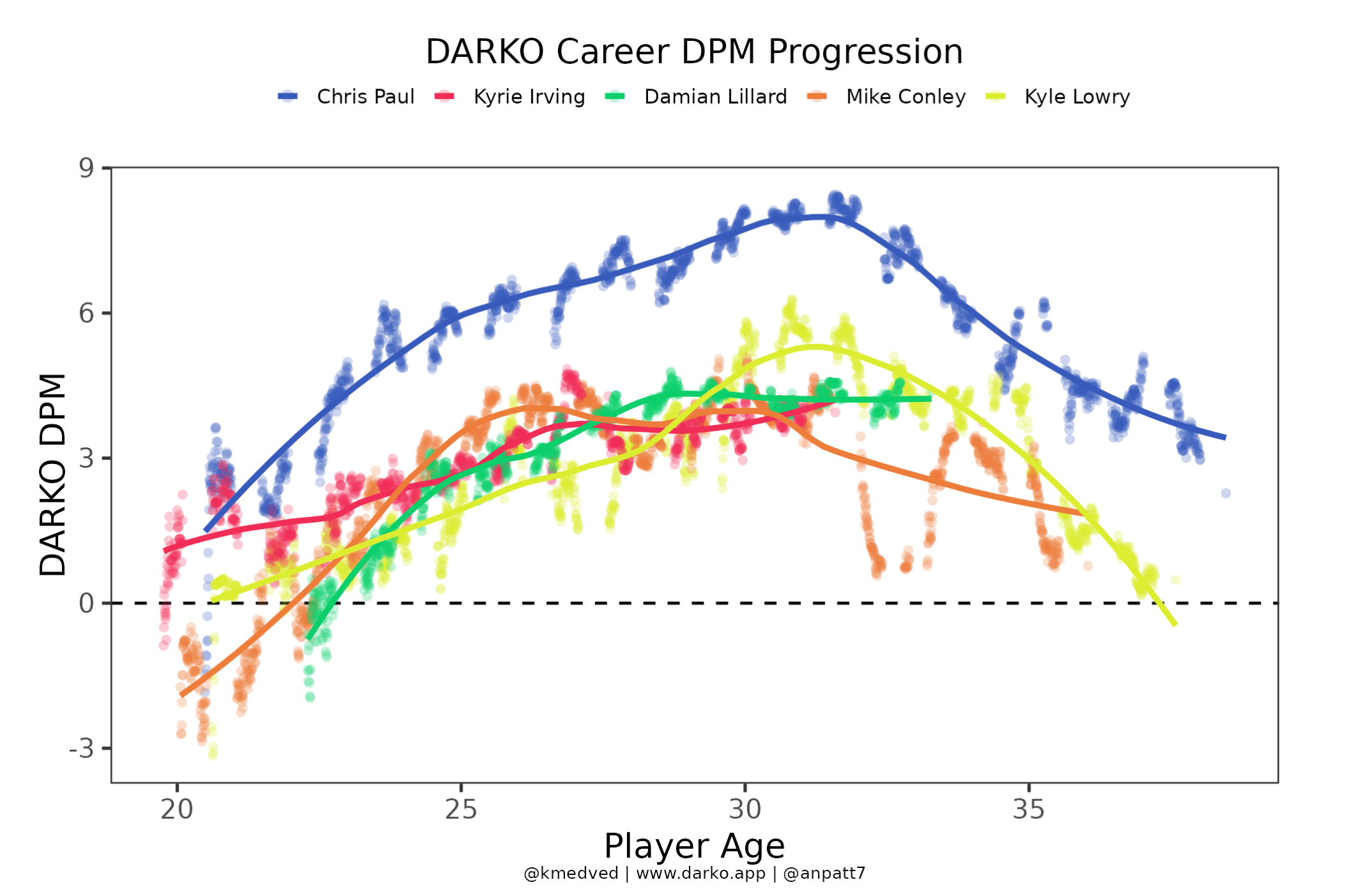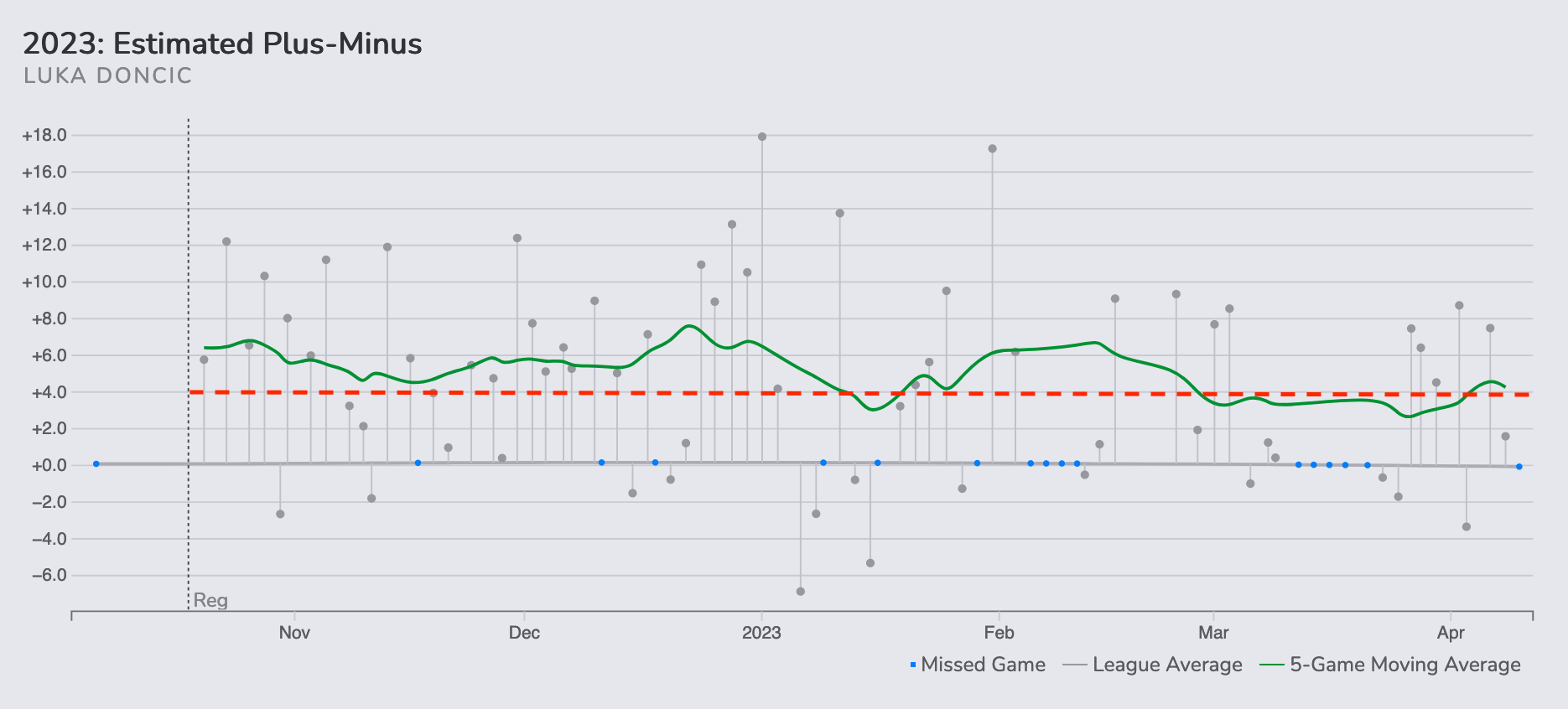After six long months, the moment has arrived: the Dallas Mavericks open the 2023-24 NBA season tonight when they face off against young French prodigy Victor Wembanyama and his San Antonio Spurs.
As we delve into the second part of our Mavericks season preview, it’s worth revisiting the pivotal team plotlines my colleague Brian Dameris outlined last week.
My focus today is the big-picture outlook for some of Dallas’ key players. Their progress will not only determine the Mavericks’ position in the Western Conference this season but also their potential to return to contender status in the years to come.
We’ll begin with the less-crucial names and then progress in order of importance. To support my player career arc comparisons, I’ve used two of the most trusted publicly available advanced metrics among the NBA nerds like me: Daily Plus Minus (DPM or DARKO) and Estimated Plus-Minus (EPM).
Grant Williams
What he is: an undersized, defensive-minded, stretch-the-floor power forward
Who he’ll remind you of: P.J. Tucker, Jae Crowder, Dorian Finney-Smith, Maxi Kleber
The key question: can Willams become a better version of a Dorian Finney-Smith or Maxi Kleber?
Let’s start with the Mavericks’ prized offseason addition, who can be viewed with either optimism or skepticism. For the glass-half-empty crowd, the 6-foot-6 former Tennessee Volunteer might not live up to the expectations of a game-changing summer move. When examining both DPM and EPM metrics, Williams has yet to reach the peak impact of the players in the chart above, including Finney-Smith and Kleber, the team’s previous designated 3-and-D wing stoppers. That serves as a reminder of both how good peak Doe-Doe and Maxi were as well as what the ceiling of a low-usage, floor-stretching power forward can be.
But I’ll join the optimistic crowd, because I believe Williams has several things working for him. First, I think advanced metrics might be underselling his value after he played on a stacked Celtics team behind great players in Jason Tatum, Jaylen Brown, and Al Horford. There’s plenty of room for growth in the expanded role he’ll have with the Mavericks. Second, as we’ve already witnessed during his short stint in Dallas, Williams brings much-needed leadership and toughness to a team that desperately needed them, and those things cannot be measured individually or on a stat sheet. He’s also turning 25 this November, and every comparable player except Crowder peaked later, between the ages of 27 and 29.
If Williams can step in for the declining Kleber and become an equally stout and more vocal presence on the floor, then the Mavericks will have successfully filled a crucial void in the starting lineup. And as we’ve seen it in past playoffs, this role is essential in enabling Luka Doncic to truly shine.
Josh Green
What he is: a defensive-minded shooting guard who can create more than a typical 3-and-D wing
Who he’ll remind you of: De’Anthony Melton, Bruce Brown, Josh Hart, Kentavious Caldwell-Pope
The key question: Can Green establish himself as a starting-caliber player on a contending team?
The Mavericks likely pondered this same question prior to inking the soon-to-be 23-year-old Aussie to a three-year, $41 million contract extension on Monday. Based on the contract and what we’ve seen in the preseason, it’s still wait and see.
Green’s progress was right on track with the other players in my comparison, all of whom have spent time as either starters or key playoff contributors on contending teams. Then his “impact curve” experienced a dip during the latter half of last season. The coaching staff’s reluctance to give Green an expanded starting role, while occasionally frustrating, does have some rationale behind it. Last season, Green averaged 11.8 points over 21 games as a starter compared to 7.8 points in 39 games coming off the bench. Starting games, however, took a toll on his scoring efficiency: he shot 49 percent from the field as a starter compared to 59 percent as a reserve.
Diving deeper, Green was particularly efficient when his usage hovered in the typical 3-and-D player range of 10 to 15 percent. When he was called upon for more playmaking and shot creation—reflected by a usage rate between 15 to 30 percent—his efficiency noticeably dropped. After the Mavericks acquired Kyrie Irving, Green averaged just 6.7 points over the 16 games in which both Doncic and Irving were on the court.
Finding the right role and balance will be important for Green and the coaching staff this season. Green is even younger than Williams and still has plenty of room to grow: some of Green’s comparables reached peaked past the age of 27.
The dollar value of Green’s new contract suggests he’s valued as a backup or a below-average starter. But the short duration of his extension implies he believes he can become more than that sooner rather than later. Should he do so, it would nudge the Mavericks closer to a title, even if Green tops out as a role player. Look no further than the defending champion Denver Nuggets to understand the value of surrounding superstars with athletic two-way players. If nothing else, the fact that Dallas now has two good young wing defenders locked up on bargain contracts should make Mavs fans feel good for the future.
Dereck Lively II
What he is: an athletic, rim-protecting, rim-rolling big
Who he’ll remind you of: Tyson Chandler, Mitchell Robinson, Jarrett Allen, Walker Kessler, Nic Claxton
The key question: How quickly can Lively contribute to winning basketball?
Originally, I had Lively as the least impactful name on this list, but I moved him up for two reasons. First, the defensive-anchor, rim-protecting big man is a much more important role than a defensive wing or power forward. Second, the athletic 7-foot-1 specimen has demonstrated sufficient maturity and caliber of play since being selected 12th overall to suggest the concern isn’t whether he’ll make an impact in the NBA, but when.
Lively has shown flashes in the preseason, but questions linger: how quickly can a 19-year-old rookie center contribute to winning, and how much leeway can the Mavericks afford his learning curve in what appears to be an exceptionally competitive Western Conference?
Using the EPM metric, it’s evident that most players in our comparison began making a positive impact around the 50-career-game mark.
Kessler and Robinson popped even earlier, after just about 20 games, but Kessler was 22 in his rookie year, while Robinson was 20. In contrast, younger players like Claxton and Allen only began making a positive impact when they reached the age of 21. And none of those players faced the pressure of rejuvenating a struggling defense and performing on a team pushing for playoff contention as rookies.
Lively is definitely a worthwhile investment for the Mavericks in the long term. He looks like the big-picture solution at the center the team has been searching for since his new mentor, Chandler, left Dallas in 2015. How quickly he grows into his immense potential—and how Jason Kidd balances the goal of remaining competitive in the playoff race while allowing his young center to learn from on-court mistakes—will be among the most compelling storylines to follow this season.
Kyrie Irving
What he is: a small, dynamic, ball-dominant point guard in his 30s
Who he’ll remind you of: Chris Paul, Steph Curry, Damian Lillard, Kyle Lowry, Mike Conley
The key question: How many peak Kyrie Irving seasons will the Mavericks get?
The good news is the 31-year-old showed no signs of slowing down last year. During his time in Brooklyn, in particular, Irving enjoyed one of his most impactful seasons as per the advanced metrics.
Another cause for optimism: all other players I’ve compared him to continued to perform at a high level well into their 30s.
But given Irving’s complicated injury history and the fact that he’ll turn 32 in March, it’s not unreasonable to wonder when we might start seeing signs of decline. Irving hasn’t played more than 60 games in a season since 2018-19 with Boston, and he has played over 70 games in only three of his 12 seasons in the league. All of these 60-plus game seasons occurred prior to Irving turning 27.
As Doncic enters his prime, the Mavericks need to find the best way to prolong the prime years of his co-star. The good news is if the Slovenian superstar takes another leap forward and continues to shoulder the majority of the on-ball responsibilities, the team might not require a high-usage, standout season from Irving. A couple of quality seasons from him should do the trick.
Luka Doncic
What he is: a do-it all heliocentric superstar
Who he’ll remind you of: James Harden, LeBron James, Giannis Antetokounmpo, Nikola Jokic
The key question: Can Doncic sustain his excellence for the full NBA season and win his first MVP award?
I’ll end with the question that matters the most.
While the roles and performances of other players are significant, the NBA is a star-driven league. Having a top-three or an MVP-caliber player is what makes the biggest difference, and Doncic is poised to enter the pinnacle of his individual prowess this season. Prior to the onset of the 2022-23 season, I attempted to pinpoint when Doncic’s peak years would occur and what his peak would look like. My models projected that he’d reach his peak, leading to an MVP-caliber year, between ages 25 and 27. Then, after an extraordinary first three months of the season, Doncic made me look silly by reaching that level in January, way ahead of schedule.
Ultimately, not for the first time, Doncic couldn’t sustain that pace throughout the entirety of an NBA season.
The burden of carrying a Mavericks’ roster bereft of Jalen Brunson and decimated by injuries took its toll by the time reinforcements arrived in February. Doncic struggled with multiple injuries that sidelined him for 10 games in the last three months of the season. He never returned to the level of play we witnessed in the season’s first half. It was the inverse of the 2021-22 campaign, in which Doncic entered the year out of shape, struggled to produce, missed 10 games in December with injuries—and then looked spectacular after the new year while leading Dallas to the Western Conference Finals.
So we’ve seen Doncic play at an MVP level for half seasons. It is now time to see if he can put that together over a full campaign. The good news is Doncic appears set to begin the 2023-24 campaign in good shape, following extensive summer workouts and a FIBA World Cup stint with the Slovenian national team. He’s already encountered a minor setback, however, having injured his calf prior to a recent homecoming game in Madrid, an injury that has his status in doubt for the season opener.
If Doncic manages to elevate his game further and maintain MVP-level play throughout the entire season, it will undoubtedly alleviate some of the pressure on other players we have talked about here. On the other hand, should those players step up and the young core develops quickly, it would lessen the burden on Doncic, enabling him to better navigate the rigorous demands of a full NBA season.
The latter is probably better for the Mavericks’ future. But the former could mean the most spectacular individual season of basketball Dallas has ever seen.
Author



